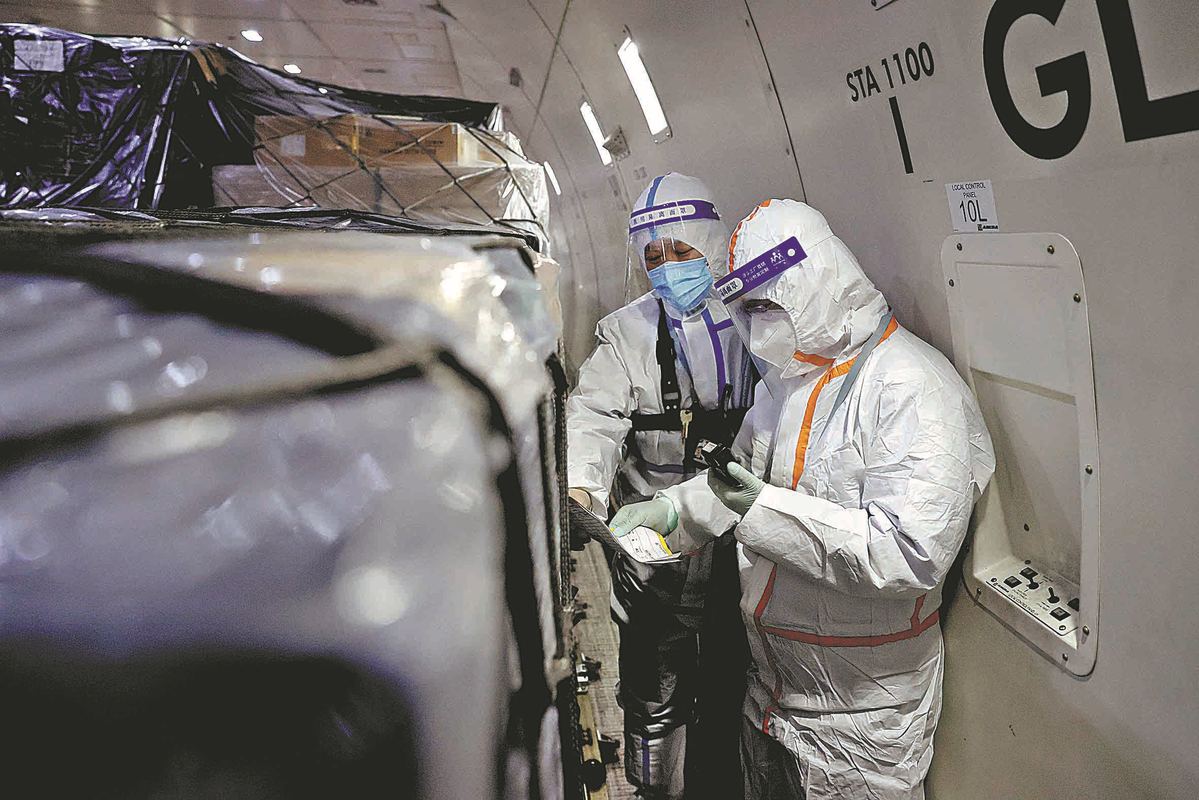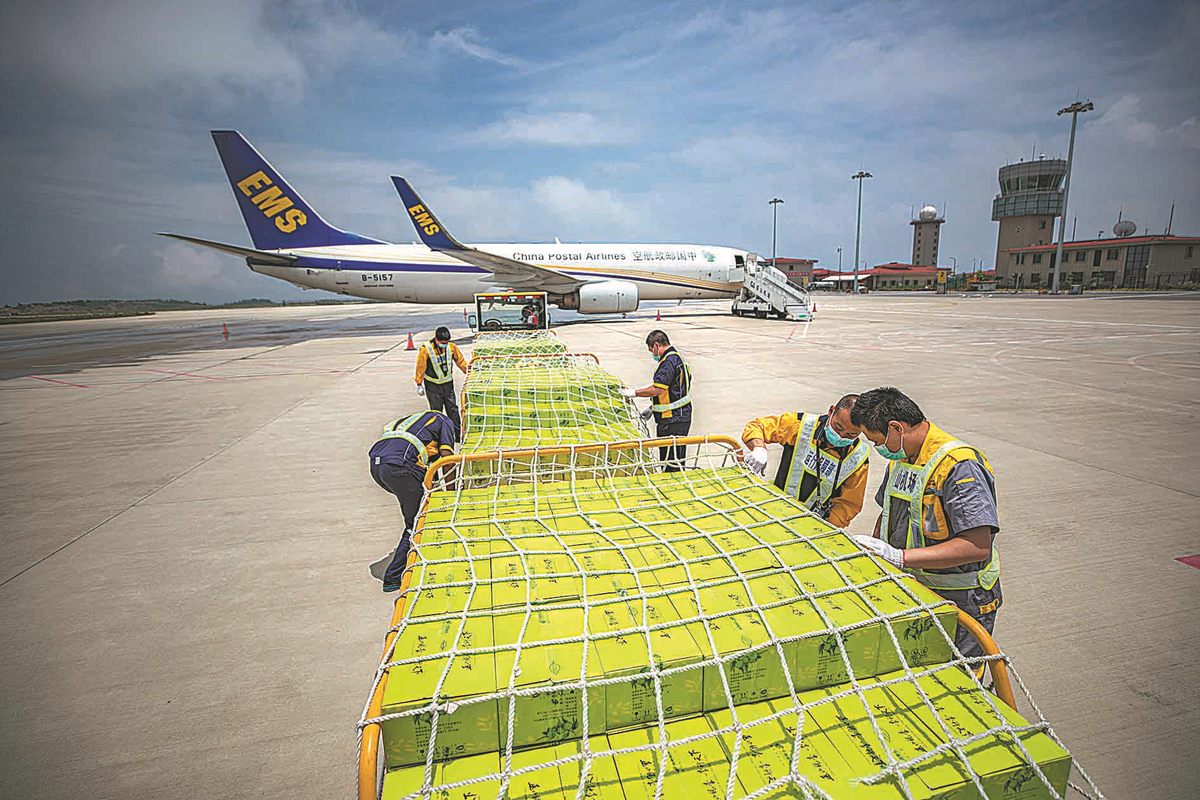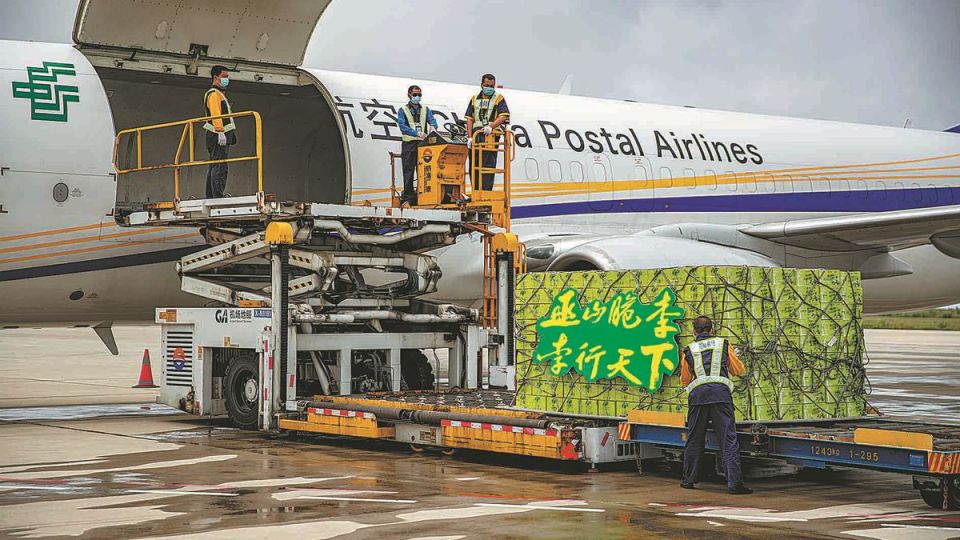July 12, 2022
BEIJING – Sector gradually bouncing back from pandemic, but challenges remain
China’s civil aviation industry is gradually recovering from the worst effects of the COVID-19 pandemic to date, according to experts.
However, challenges remain. Since late March, new outbreaks of the disease have hit some areas of the country, including Shanghai and Beijing. These cases have resulted in stricter measures to contain the novel coronavirus, which have affected the flow of passengers and cargo.
A two-month lockdown in the municipality greatly affected Shanghai Pudong International Airport, one of the nation’s most important in terms of the number of passenger trips, connectivity with other cities and countries, and passenger and cargo throughput volumes.
In April, the airport handled 42,600 passenger trips and a total of 3,520 incoming and outgoing flights, respective year-on-year falls of 98.9 percent and 90.67 percent.
That month, China handled 136,000 flights and 7.88 million passenger trips nationwide-14.24 percent and 14.8 percent, respectively, of the volume in April 2019.
Li Xiaojin, a professor of aviation economics at Civil Aviation University of China in Tianjin, said, “The data for this April corresponds with the level of development in the industry 20 years ago.”
The sector’s performance in April was the worst since COVID-19 was first reported in China at the start of 2020.
In March, a plane carrying 132 people crashed in Guangxi Zhuang autonomous region, leaving no survivors and ending the Chinese mainland’s more than 11-year spotless flight safety record.
The crash shocked the country and affected morale in the industry.

Border control officers inspect paperwork for cargo aboard a plane in Yantai, Shandong province, in January. QIAN CHENG/FOR CHINA DAILY
Assistance provided
To help airlines through difficulties such as declining passenger trips and rising fuel costs, government subsidies are being offered, according to the Civil Aviation Administration of China, or CAAC, and the Ministry of Finance.
Domestic carriers are expected to benefit from the financial support when 4,500 or fewer domestic commercial flights are operated daily. These flights do not include those in Hong Kong, Macao and Taiwan, emergency flights, and those operated by private business jets.
The Ministry of Finance is providing 65 percent to 80 percent of the subsidies, with the remainder being funded by governments in departure cities.
The subsidies, which are being offered from May 21 to July 20, have stabilized operations in the sector, prompting a rise in commercial flights and fares.
Other government subsidies, such as tax relief and financial credits, are also being provided to the civil aviation sector, according to a joint guideline released by the National Development and Reform Commission and other government departments in February.
Civil aviation expert Yu Zhanfu, partner and vice-president of the China unit at consultancy Roland Berger, said, “This is a positive sign that the State understands the challenges facing the sector and is willing to help it through difficult times.”

A tour group arrives in Wuhan, Hubei province, from Lanzhou, Gansu province, on June 28. MU ZHI/IC PHOTO
Business efforts
Airlines worldwide have been badly hit by the pandemic, and some are taking on additional business to blunt its impact.
Last month, China Southern Airlines said it would explore expansion in new fields such as online retail, tourism and hotel bookings. It also plans to offer Japanese- and French-language training to children and adults, and is recruiting children to join a summer camp themed on civil aviation. Flight attendants are hosting livestream broadcasts on social media platforms, with the products on offer ranging from agricultural produce to Sichuan hotpot.
However, Yu warned carriers to be cautious about taking on additional business.
“The effectiveness of such business depends on the size of the airline. Earnings from livestreaming sales may be considerable for budget airlines, but the profits may be insignificant for large carriers,” he said.
Yu added that China Southern Airlines is not simply exploring additional business, but is changing its business model.
Li, from Civil Aviation University of China, said some airlines have promoted cargo flights to make up for the loss of passengers. Demand for freight transportation grows when epidemic control measures are tightened, he added.
Before the pandemic emerged, revenue from cargo flights typically accounted for about 5 percent of an airline’s total income. With the onset of COVID-19, passenger trips declined and the number of freight routes rose. In some cases, earnings from cargo flights doubled or even tripled.
Li said that although diverse attempts are being made to reboot the industry, the key is epidemic control and allowing the flow of people and goods.

A cargo of plums is loaded aboard a plane at Chongqing Wushan Airport. Plums arrive in Nanjing, Jiangsu province, from Chongqing. HUANG WEI/XINHUA
Policy easing
To control imported cases of the novel coronavirus, the CAAC introduced the “circuit breaker” and “Five One” mechanisms in 2020.
These policies reduced the spread of the virus, but also resulted in a drastic drop in the number of international flights, thus deterring travelers.
According to the “Five One” policy, domestic airlines must reduce their international routes to one per country and cap their number of flights at no more than one per week, while foreign carriers are allowed to maintain only one air route to China and operate no more than one flight a week.
The “circuit breaker” rule means that carriers’ operations will be suspended for two weeks if five or more passengers test positive for COVID-19 when they land in China. If 10 or more passengers test positive, the suspension period is extended to four weeks.
The rules have been fine-tuned to adapt to domestic and international COVID-19 situations.
Liang Nan, director of the CAAC’s transport department, said during a news conference last month that the administration is holding discussions with some countries on gradually increasing international passenger flights to cater to travel requirements.
She said international flights are beneficial for China’s economic development, domestic and international travelers, and for the sustainable development of the air transportation industry.
From June 24 to 26, more than 10,000 flights were handled nationwide each day-about 60 percent of the volume before the onset of the epidemic, according to CAAC News.
On June 28, the centralized quarantine period for inbound travelers to China was reduced from 14 to seven days. Quarantine policies in some regions have also been adjusted.
Yu, from Roland Berger, said adjustments to the “circuit breaker “rule and to international flights are clear signs of a recovery in China’s civil aviation industry.
“The industry’s international market, which has been badly affected by COVID-19, will start a new but gentle recovery and will make adjustments when needed,” Yu said.
“This does not mean that China will open fully to the international market unconditionally. It is a test to keep the epidemic and associated risk under control while making slight changes. If the results are good and imported cases can be contained, this may lead to the sector adding more international flights and recovering more quickly.”
Li said: “Epidemic control is the decisive factor in the industry’s recovery. China is attempting to find ways to ease epidemic control step by step.
“However, the output value of the civil aviation sector is very small. Even in 2019-a peak time-it accounted for just 1 percent of GDP, but it involves upstream and downstream industries.
“The sector cannot generate much clear profit, but it has an impact on society, especially high-value industry. Thus, policy adjustments will boost civil aviation’s recovery, which is very important for China’s social and economic development.”

A plane carrying tourists arrives in Dunhuang, Gansu, on April 28. ZHANG XIAOLIANG/XINHUA
In Guangdong province, Qi Qi, an associate professor at Guangzhou Civil Aviation College, said: “I predicted a few months ago that with better control of the epidemic at home and abroad, China will lift the ‘circuit breaker’ rule to some overseas destinations. These places should have performed well in controlling the coronavirus and be willing to cooperate with China’s inbound epidemic prevention policy. We are now moving in this direction.”
Zhu Yaochun, deputy chairman of the China Air Transport Association, said at a recent seminar on the industry’s recovery, “It is essential to promote an orderly recovery and open domestic and international markets.
“Most countries in North America and Europe have restored their international routes. We need to promote the resumption of international routes in China as soon as possible to boost opening-up and improve connectivity between the Chinese and global economies.”


